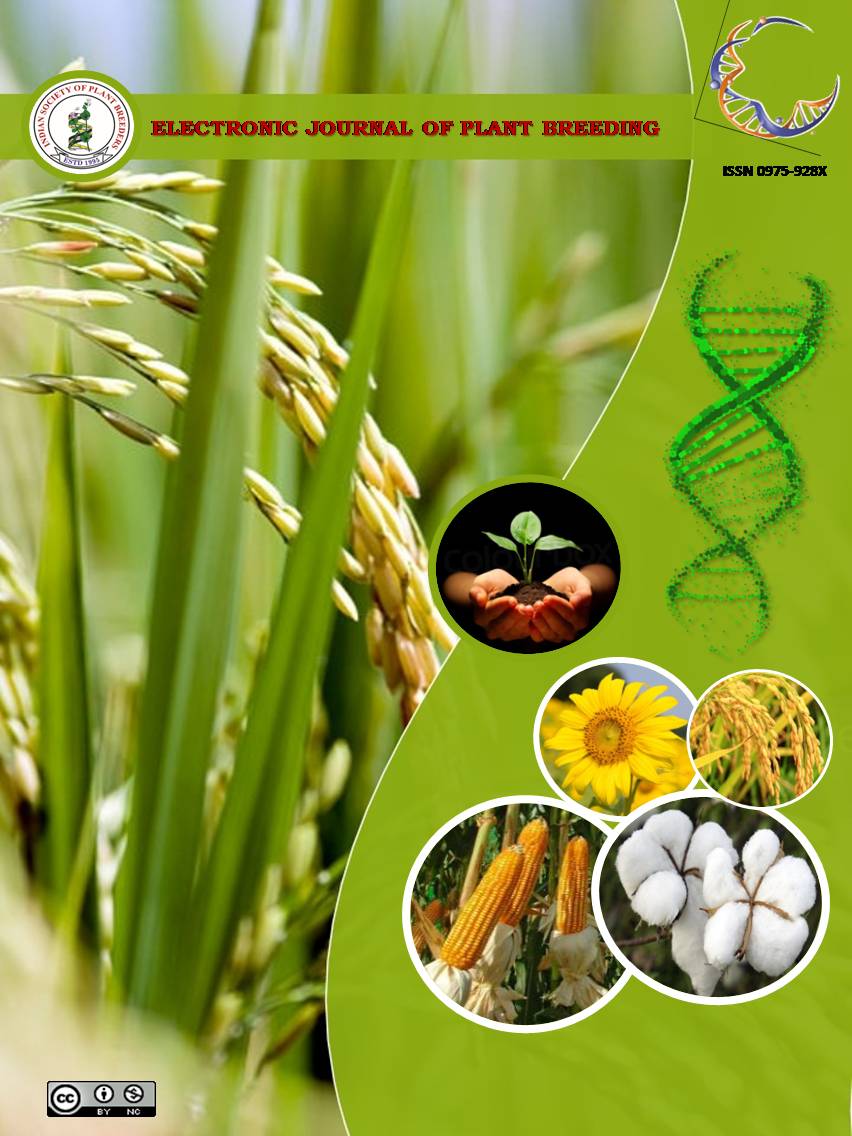Genetic variability analyses for economic traits in sesame (Sesamum indicum L.) germplasm
Abstract
The present study aims to reveal the importance of some quantitative traits and genetic variability existing in the 40 sesame germplasm accessions. The analysis of variance revealed the significant differences among the genotypes for all the characters studied viz. days to maturity, capsule length, number of capsules per plant, number of seeds per capsule, leaf length, oil content, protein content, days to 50% flowering, number of branches per plant, number of leaves per plant, plant height, 1000-seed weight and seed yield per plant, which showed high heritability. The higher estimates of GCV were obtained for number of capsules per plant, number of branches per plant and seed yield per plant, while, it was moderate for capsule length, internode length, number of seeds per capsule and number of leaves per plant. Rest of the characters viz., days to 50% flowering, days to maturity, plant height, 1000-seed weight, leaf length, oil content and protein content showed low GCV. The characters like; capsule length, number of branches per plant, number of leaves per plant, number of capsules per plant, number of seeds per capsule and seed yield per plant exhibited high genetic advance coupled with high heritability, indicating better scope for improvement of these traits by an effective selection programme also indicated the predominance of additive gene effects, in controlling these traits.

It is certified that:
- The corresponding author is fully responsible for any disputes arising due to the publication of his/her manuscript.
- The article has been seen by all the authors who are satisfied with its form and content.
- The sequence of names of authors in the by-line is as per their relative contribution to this experiment, giving due credit to all scientists who made notable contribution to it.
- All the authors fully understand that inclusion of any other co-authors or exclusion of any co-authors is not possible once the article has been submitted to the journal.
- The corresponding author takes full responsibility for this article.
- The address of the organization where the research was conducted is given.
- The article is exclusive for this journal, and the results reported here have not been sent (and will not be sent during its consideration by this journal) for publication in any other journal.
- Authors agree to abide by the objective comments of referees and do agree to modify the article into a short note as per the recommendation, for publication in the Electronic Journal of Plant Breeding.
- If published in Electronic Journal of Plant Breeding, the copyright of this article would vest with the Indian Society of Plant Breeders, who will have the right to enter into any agreement with any organization in India or abroad engaged in reprography, photocopying, storage and dissemination of information contained in it, and neither we nor our legal heirs will have any claims on royalty.


